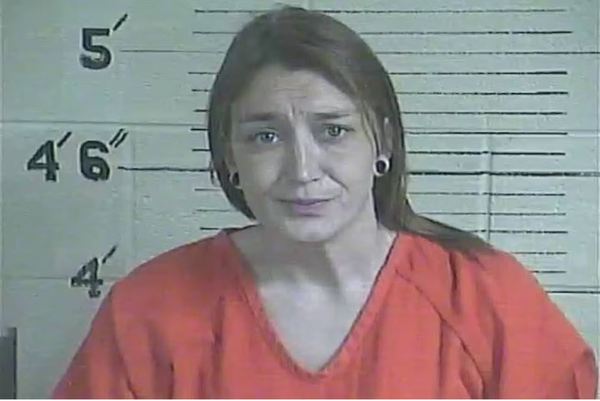CHICAGO — An Illinois region reported Monday and Tuesday that it ran out of intensive care unit beds, a milestone that has meant delayed surgeries and, in some cases, longer waits for appropriate care.
In the latest Illinois Department of Public Health count released Tuesday, the state’s southern region reported that, overnight Monday, its hospitals had no available ICU beds in an area that includes roughly 400,000 people. As of Tuesday morning, 19 hospitals in that region still had zero open ICU beds, said Arien Herrmann, regional hospital coordinating center manager for the area.
The number of available ICU beds in any region is constantly changing, as hospitals admit and discharge patients. Numbers reported to the state are a snapshot in time. But this week was the first time IDPH reported that any of the state’s 11 state-designated health regions had no available ICU beds.
An advocacy group of medical workers described it as “signaling a public health emergency of epic proportions” for the south region, spread from roughly Mount Vernon to Illinois’ southern tip and east to the Indiana line.
“This is not a ‘pandemic of the unvaccinated,’ but a pandemic that affects everyone as emergency and routine health care collapses for a region,” said a statement released Tuesday by the group Illinois Medical Professionals Action Collaborative Team, known by its acronym IMPACT.
The Illinois Department of Public Health has been warning for weeks about a possible shortage of beds, particularly in southern Illinois, department spokesperson Melaney Arnold said in an email Tuesday.
The state has tried to help, such as by sending additional staff to southern Illinois hospitals, but “all of these emergency actions are temporary fixes and Illinoisans need to follow the common sense mitigations in place to stop the spread and stem the tide of hospitalizations due to COVID-19,” and should get vaccinated, she said.
To deal with situation, hospitals in southern Illinois region 5 are delaying some elective surgeries to help keep beds open, Herrmann said. Though the term “elective” may bring to mind cosmetic and other optional procedures, many are actually necessary if not emergency treatments, such as heart valve replacements and certain cancer therapies.
The influx of COVID-19 patients also means that many patients must wait in beds in emergency departments for space to open in other parts of the hospital. Southern Illinois had about 15 people waiting in beds in ERs Tuesday morning for beds elsewhere in the hospital, and last week that number got into the 30s, Herrmann said.
Last week, doctors at Franklin Hospital in rural Benton had to put one patient on a ventilator in the ER.
Normally, the small hospital transfers patients in need of intensive care to other area hospitals, but last week all area hospitals were full, said Franklin CEO Jim Johnson.
“It was a new experience for our ER staff,” Johnson said, noting that the patient recovered. “We did the best we could.”
Franklin is a 16-bed hospital, but it recently has only been able to staff six beds, he said. Staffing is short across many industries, and the latest COVID-19 surge has exacerbated that shortage for hospitals.
Some hospitals in southern Illinois have received extra staffing from the state, which is getting health care workers from agencies and then deploying them where needed. The state will have sent about 100 additional health care workers to the region by the end of this week, Arnold said.
The extra staffing allowed southern Illinois hospitals to add about 10 more ICU beds over the last week and a half, Herrmann said.
Even with those additional beds, however, the region’s ICU beds were full Monday night and Tuesday morning.
The state health department has also received federal approval to use beds at three U.S. Veterans Affairs medical centers for the next month, and since Monday night had transferred four patients to those hospitals because of a lack of beds at other area facilities, Arnold said.
Herrmann and public health advocates say it’s clear that the lack of ICU beds in the region is due to the area’s low vaccination rates. As of Tuesday, the region’s rate was just 38% of residents fully vaccinated, according to a Tribune analysis. That compares with the five regions in the Chicago area, in which all are above 52% and one — covering DuPage and Kane counties — tops 60%.
“We have the lowest vaccination rate in the state,” Herrmann said. “It’s that simple. I really think the data speaks for itself.”
The lack of ICU beds in southern Illinois this week epitomizes what has been one of the worst fears of state leaders throughout the pandemic: that hospitals could get overrun. That’s one way state leaders historically have rationalized shutdowns and mask mandates — arguing it’s about limiting a virus’s spread so everyone’s collective health care system doesn’t collapse.
While the latest surge has been nowhere near as deadly as the one last fall, even then none of IDPH’s daily reports showed a health region with no available ICU beds. Back then, the state health director called it “dire” when another region, covering Will and Kankakee counties, was down to just 22 open ICU beds one night.
For weeks, state data had shown the more contagious delta surge hit the less vaccinated Downstate area particularly hard.
The state’s most southern region had regularly been down to just a handful of open ICU beds. Regions report availability each midnight, and at one point late last month, the southern region reported just one ICU bed free, with the region’s 22 hospitals scrambling in the weeks since by postponing surgeries and even turning away some patients.
By 11:59 p.m. Monday, those southern Illinois hospitals collectively reported that, of the 88 ICU beds they could staff, every single one was occupied.
To put that in context, at the same time, the Metro East region near St. Louis had 28 ICU beds open. Regions farther north had 32 and 36, respectively.
Health officials have cautioned that counts are constantly fluctuating, and hospitals have described a nuanced treatment system, in which they can sometimes care for ICU patients in other parts of the hospital or add ICU beds if they have the staff.
Though ICU space is tight in southern Illinois, the region is still a long way from having to implement crisis standards of care, such as rationing of care, as has happened in Idaho, Herrmann said.
Still, the state set up the ICU metric as one key marker on how Illinois was faring during the pandemic. State health officials have said they grow concerned when a region dips below 20% of its ICU beds being available.
While IDPH releases the nightly figures, it also studies figures that average each region’s percentage of open beds in the past week. That shows the southern region averaging 5% of its ICU beds available each night, about as bad as it was there earlier this month but not as bad as late August, when hospitals in that region averaged just 3% of ICU beds available.
Comparably, three of the five regions in the Chicago area have ICU availability that’s averaging below 20%, but not nearly as low as the southern region: suburban Cook (16%), Lake-McHenry counties (17%) and Chicago (18%)
Statewide, just under 20% of the 3,134 staffed bed in intensive care units were available as of Monday night. Of occupied ICU beds, more than 1 in 5 had COVID-19 patients.
The jammed ICUs in the state’s southern region come as Gov. J.B. Pritzker has pointed to statewide data showing hospitalizations are starting to flatten after surging this summer, largely due to the highly contagious delta variant.
”I’m pleased about that, but until they start to come down the other side of this, we can’t lighten up on our mitigations because, once again, we’re trying to defeat this so that people can go about their daily lives,” Pritzker said Tuesday at an unrelated event in Aurora.
During the week ending Monday, an average of 2,287 COVID-19 patients per day were filling hospital beds statewide, up from an average of 2,207 during the week ending Aug. 31, an increase of about 13%. During the previous two-week period, the average jumped from 1,787 patients per day to 2,201, a 23% increase.
____







